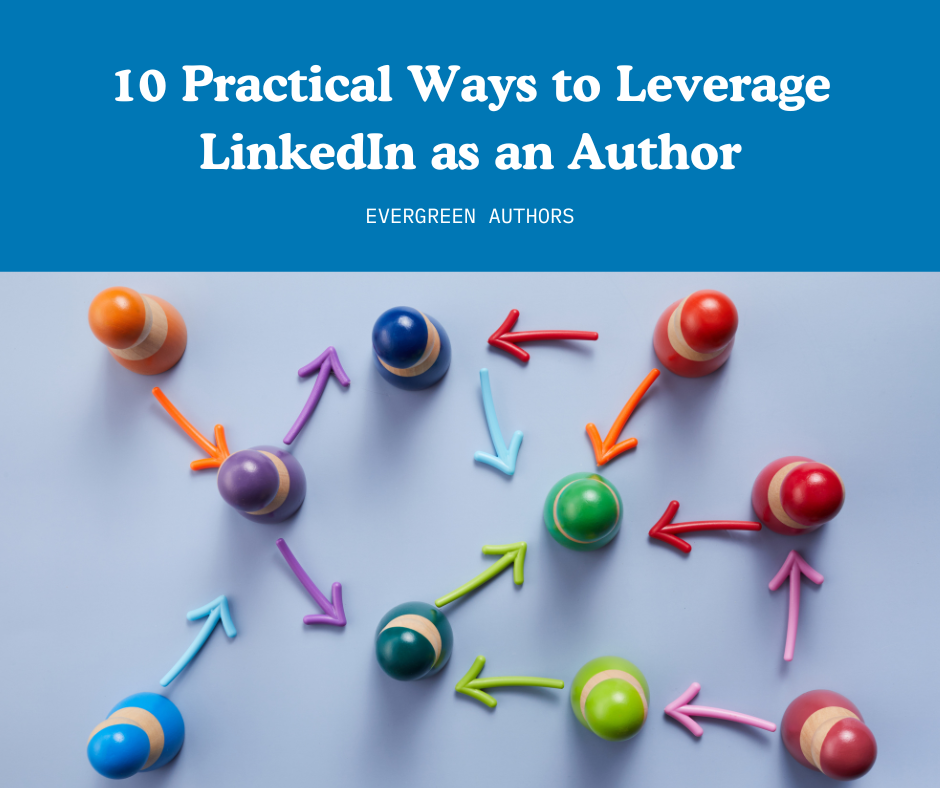10 Practical Ways to Leverage LinkedIn as an Author
To know us is to know we have a love/hate (mostly hate) relationship with social media.
It’s just so finicky. And time consuming. And inconsistent. We could go on.
You probably think this is where we say, “but there is one exception, and that is LinkedIn!”
Sort of.
LinkedIn drives us crazy for all the same reasons other social media platforms do.
It’s also unique in ways that make it very accessible and manageable for authors.
READ MORE: 7 Simple Steps to Promote Your Book on LinkedIn
So if you are interested in exploring LinkedIn, and seeing how this platform can work best for you as a writer, here are ten best practices for maximizing your LinkedIn potential:
1) Complete Your Profile
We are amazed by how many authors don’t do this simple step. Fill out every section of your LinkedIn profile.
Yes, that means your volunteer work.
Yes, that means the job you did many years ago that doesn’t really relate to your current role.
This includes a professional photo, headline, summary, work experience, education, skills, and endorsements.
2) Upload a Professional Headshot
Use a high-quality, professional headshot, one that shows your face and makes you look like an author worth reading.
Profiles with photos receive significantly more views and connection requests, not to mention establishing you as an authority in your subject and/or craft.
3) Write Strong Headline
Craft a compelling headline that goes beyond just stating you are an #author. Here are a few examples to get you started.
4) Create a Detailed Summary
This is your time to shine! Write a well-crafted summary that tells your professional story, and don’t forget to include anything relevant to your book and writing journey.
Side note: DO NOT PHONE THIS ONE IN.
Don’t use ChatGPT, don’t copy/paste from someone else. People reading this should get a glimpse of YOUR authentic voice.
5) Showcase Experience and Achievements
We know it’s tedious, but take the time to list your work experience in detail.
Focus on your achievements and contributions rather than just job duties, and take whatever chances you can to relate those achievements to your creative work.
Depending on your genre, this will be easier for some authors and harder for others.
6) Customize Your URL
Create a custom LinkedIn URL (e.g., linkedin.com/in/yourname) to make your profile easier to find and share.
This is such a simple thing, but will be important for you if you want to grow your audience and reach on LinkedIn.
It will also make sharing your profile there a million times easier.
7) Skills and Endorsements
List relevant skills – this is a great way to tell LinkedIn what content is relevant to you and what posts you should be seeing and connecting with.
Don’t worry about seeking endorsements from colleagues, clients, and other connections. If that happens organically, great. But if not, don’t sweat it.
8) Engage with Content
Social media is SOCIAL.
Don’t just set your profile and forget it – share and create content relevant to your book and your creative journey.
Comment on posts, join discussions, and show your expertise and unique voice by writing articles or posts.
Don’t worry about saying the “right” thing, using the right SEO tricks, or even tagging or hashtagging. Just engage as your authentic self!
9) Gradually Build a Strong Network
Notice the world “gradually”.
If you are brand new to LinkedIn, or maybe you haven’t used it in a long time, you’re going to feel like you need to “catch up” and connect with hundreds of people in order to feel like you’re doing it right.
You really, really don’t!
We love LinkedIn because it remains one of the only social platforms that truly rewards organic and quality content.
Trust us — your network WILL grow the more you use the platform the way it’s meant to be used.
10) Stay Active and Update Regularly
Consider LinkedIn to be your living, breathing resume. Not just for your job, but also for your book!
Share your trials and triumphs, update your network on any exciting speaking events you have coming up, and engage in groups of fellow writers of your genre.
We know, we know. Many of these practices can be applied to all forms of social media.
But LinkedIn is different in one really powerful way: You do not need to be on there all day every day in order to see growth, partnerships, and conversions.
You can present yourself as the authority figure and professional writer that you are, and find an endless network of colleagues there.



